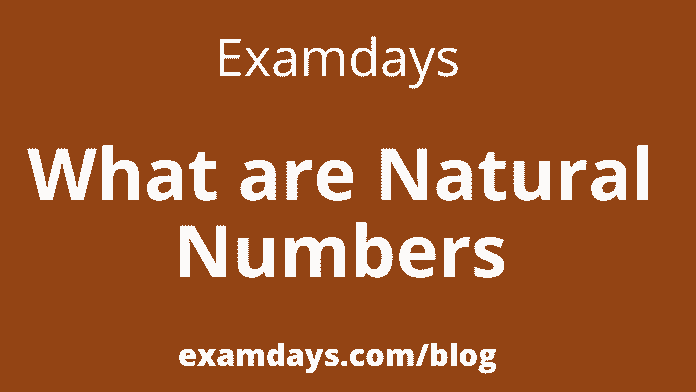The number system includes all positive integer values from 1 to infinity and is also used for calculation. It does not contain zero (0). 1,2,3,4,5,6,7,8,9…. are also called counting numbers. Natural numbers, including positive integers 1, 2, 3, 4,5,6, … except zero, fractions, decimals, and credit numbers, are part of real numbers. Natural numbers do not contain negative number values or zero.
Natural numbers are an essential part of the number system, including all positive integers from 1 to infinity used for computational purposes. Natural numbers come under real numbers and include positive integers 1, 2, 3, 4, 5, 6, 7, 8…etc. Numbers are everywhere around us to count things, represent or transfer money, measure temperature, tell time, etc. “Natural numbers” refers to numbers used to calculate things.
What are Natural Numbers
While counting objects, we can say five glasses, six books, one bottle, etc. The number system consists of all positive integers from 1 to infinity, called natural numbers. Natural numbers are sometimes counted because they do not contain zero or negative numbers. They are only positive integers, not zeros, fractions, decimals, or negative numbers, and are part of the real number system.
The set of all integers except 0 are called natural numbers. These figures play an essential role in our daily activities and communication. The natural numbers are countable and a subset of the real numbers. The natural numbers contain only positive integers like 1, 2, 3, 4, 5, 6, etc. Natural numbers represent negative integers (all positive integers). Examples could be 39, 696, 63, 05110, etc. Natural numbers are positive integers, including numbers from 1 to infinity. Natural numbers favor countable numbers and calculations. One is the smallest natural number. Natural numbers start from 1 to 100, and the sum is n(n+1)2.
N = {1,2,3,4,5,6,7,8,9,10…….}
The introductory part explains that natural numbers include positive integers and numbers from 1 to infinity(∞). These numbers are quantifiable and are generally used for calculation purposes. The list of natural numbers is denoted by the letter “N”.
what is whole number
Natural numbers include all whole numbers except the number 0. In other words, all natural numbers are real numbers, but not all whole numbers are natural numbers. The term “Set” means a group of items. In mathematics, the Set of Natural Numbers is written as 1,2,3,… The symbol symbolizes the Set of Natural Numbers N. N = 1,2,3,4,5 and so on. In mathematics, the Set of Natural Numbers is written as 1,2,3,…
- Natural Numbers = {1,2,3,4,5,6,7,8,9,…..}
- Whole Numbers = {0,1,2,3,4,5,7,8,9,….}
The above set representation shows two regions. A ∩ B is the intersection of natural numbers and integers (1, 2, 3, 4, 5, 6, ……..), and the green area showing A-B is part of the whole number (0).
Therefore, an integer is “the subset of integers consisting of all natural numbers including 0.”
Properties of the Natural Numbers:
The number line above represents natural numbers and whole numbers. All integers to the right of 0 represent natural numbers, thus forming an infinite set of numbers. When 0 is included, these numbers become integers, which are also an infinite set of numbers.
Natural numbers properties:
The Properties of Natural numbers are segregated into four main properties, which include:
- Closure property
- Commutative property
- Associative property
- Distributive property
Operations With Natural Numbers:
An overview of algebraic operations with natural numbers, i.e., addition, subtraction, multiplication, and division, along with their properties, are summarized in the table below.
Natural Numbers Properties and Operations
| Operation | Closure Property | Commutative Property | Associative Property |
| Addition | Yes | Yes | Yes |
| Subtraction | No | No | No |
| Multiplication | Yes | Yes | Yes |
| Division | No | No | No |
Conclusion:
- Natural Numbers can be defined as the set of numbers in the Number System starting from 1 to ∞ (infinity).
- These numbers DO NOT have any negative numbers, decimals, fractions, and the number 0 (zero).
- Natural Numbers are denoted by ‘N’.
- N = {1, 2, 3, 4, 5, …, ∞}
Examdays Article Agenda

